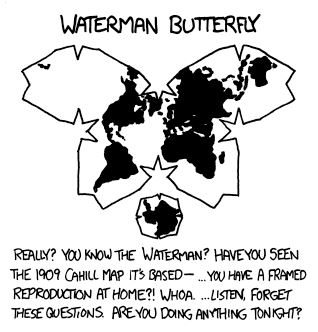Those numbers are way off. Germany has over 100 GW installed in PV. There is no way that those numbers listed here are right.
I was curious, so here’s the numbers in relation to land area (MW/1000 km^2). Based on are found in Wikipedia.
- China: 46.7
- USA: 12.3
- India: 21.9
- Japan: 82.0
- Spain: 55.3
- Germany: 72.6
- Brazil: 0.22
- France: 19.0
- Australia: 1.56
- UK: 36.9
Edit: corrected the unit.
Per capita the Netherlands should definitely be in the list
In 2023, the Netherlands was the country with the highest PV capacity per capita in Europe with 1,299Wp. Worldwide, only Australia had a higher capacity per capita.
I can’t really find the per 1000 km² when I try to calculate it I get 595 MW/1000 km^2
Maybe its somewhat correct, chatgpt gives me this
To find the solar power generated per 1000 km² in the Netherlands in MW, we need to know the total installed solar capacity and the land area of the Netherlands.
Here’s how we can estimate it:
- Current Solar Capacity in the Netherlands
As of 2024, the Netherlands had approximately 22,000 MW (or 22 GW) of installed solar capacity.
- Land Area of the Netherlands
The total land area is about 41,500 km².
- Solar Capacity per 1000 km²
\text{Capacity per 1000 km²} = \left( \frac{22,000 \text{ MW}}{41,500 \text{ km²}} \right) \times 1000 \approx 530 \text{ MW per 1000 km²}
Final Answer:
Approximately 530 MW of solar capacity per 1000 km² in the Netherlands.
Let me know if you’d like to calculate actual solar energy generation (e.g., MWh/year) instead of capacity.
Per capita the Netherlands should definitely be in the list
In 2023, the Netherlands was the country with the highest PV capacity per capita in Europe with 1,299Wp. Worldwide, only Australia had a higher capacity per capita.
I can’t really find the per 1000 km² when I try to calculate it I get 595 MW/1000 km^2 (I used the 2023 number, it had more sunny days than 2024)
Maybe its somewhat correct, chatgpt gives me this
To find the solar power generated per 1000 km² in the Netherlands in MW, we need to know the total installed solar capacity and the land area of the Netherlands.
Here’s how we can estimate it:
- Current Solar Capacity in the Netherlands
As of 2024, the Netherlands had approximately 22,000 MW (or 22 GW) of installed solar capacity.
- Land Area of the Netherlands
The total land area is about 41,500 km².
- Solar Capacity per 1000 km²
\text{Capacity per 1000 km²} = \left( \frac{22,000 \text{ MW}}{41,500 \text{ km²}} \right) \times 1000 \approx 530 \text{ MW per 1000 km²}
Final Answer:
Approximately 530 MW of solar capacity per 1000 km² in the Netherlands.
Let me know if you’d like to calculate actual solar energy generation (e.g., MWh/year) instead of capacity.
I also asked for actual generated 482 MW per 1000KM²
Yea It’s per km^2, divided by 1000. I just dropped the last 3 digits off the area when doing the calculation. I just tried to make readable units.
Would be even better in relation to population and annual consumption.
And percentage
Also square kilometers of land mass. Kinda relevant for solar.
Ain’t a map though
its a treemap
And Global Times is Chinese gov hardline propaganda Like equivalent to posting Fox News, newsmaxx under trump
Says the same thing on Wikipedia, is Wikipedia also propaganda? Well, if you’re an anarchist everything except twitter or bluesky is probably propaganda
I know

By “solar power in operation” (in GW) i think they mean maximum output capacity rather than actual production, since these numbers add up to 923 GW while wikipedia says in 2024 there was 2.13 petawatt-hours (243 GW on average) actually produced by solar.

Yes, GW Is maximum output while GWh Is actual production. You can have a 1GW power plant, but without sun you might have 0 GWh.
I find the thought hilarious, that the UK just switched their entire soil for PV and are like “why do we get only 9 GW out of it 😭?”, like ☁️☁️☁️🌧️
“But Chinese coal power is not clean unlike US clean coal!”
Im very surprised that Japan is so high up, considering how tiny it is.
They turned off there nuclear after Fukushima, fossil fuels have always been expensive for them so solar makes a lot of sense.
How about Germany and the UK?
Because Japan is larger than either.
Its very slightly larger than Germany, but its also very fractured and 50% more densely populated.
The latter seems like all the more reason to have more people per km² buying solar panels, no?
Also, more divided than Germany? How so?
Well it’s made up of four distinct islands in a sort of stretched out chain whereas Germany is more a big block of land in the middle of a continent (depending on your preferred definition of what that is).
They have the most solar power per area as far as I understand it. So good utilization!
I’m not sure if i should be impressed or sad that the UK is on that list given how small we are in terms of population and land area.
Sad because the UK’s quite small/unsunny and that means most other countries aren’t doing much?
I thought that the UK was quite strong in wind, so it’d be interesting to see that charted.
Yeh. If the many larger countries were pulling the same effort the UK would be way down the list
Can’t speak for the rest of the UK but new build houses in Scotland are required to have solar panels
On wind we are indeed a powerhouse. We see the odd headline that has something like Scotland wind power produced enough for 3 Scotlands. Wish we’re were better at storing it
I think there’s a use case for hydrogen batteries there. Use surplus green power generated overnight to split water, then recombine it during high demand times. It’s not useful for vehicles, but for static facilities I don’t see why it wouldn’t work.
It is a map, though, unlike OP’s image!
It’s not the best weather for solar here so I’m very surprised we rank to be honest. Especially given the amount we’ve been ploughing into wind.
By 2023, the UK had over 11 thousand wind turbines with a total installed capacity of 30 gigawatts (GW): 16 GW onshore and 15 GW offshore,[5] the sixth largest capacity of any country.[6]
https://en.m.wikipedia.org/wiki/Wind_power_in_the_United_Kingdom
I’m pretty impressed, considering both our land area and population, there’s about 40x more space in the us and another 240,000 or so people. China and the US are 3rd and 4th largest respectively in terms of land, 2nd and 3rd in population and 2nd and 1st by GDP
We’re 80th and 22nd in area and people, and while we’re 6th in global GDP, that’s still 1/10th of the US’s.
I’d like the square to be bigger, but the graphic would look a lot different if it was total renewable power, renewable as a percentage of total power, or even simply wind, as being an island we lean toward wind far more than China and the US. Maybe OP can give us those statistics as graphics?My coment wasn’t the clearest was it. I’m over it with the UK while disappointed that much larger places don’t even show. We shouldn’t be that hard to push off the info graphic with the area constraints we have
In all these overviews I would really like to start seeing the EU grouped as well.
That’s what I thought too, but think of the drop in the number of needed politicians, we’d cut so many useless people that it would sound incredible to most of us
China’s utility only solar was 880gw in 2024. Double infographic.
121 GIGAWATTS!?!
That’s heavy.
Calm down doc
Thats peak capacity i assume, not actual average production. If you average this over a year (including nighttime, sun angle and weather variation) its probably 1/10 of that or something like that. Still very decent.
Ha. Thanks for the explanation. I was sorta quoting BttF.
Ooh lol oopsie
Could you imagine? a world where the US is run by a corrupt sleazy “businessman”.
Haha movies am I right,
deleted by creator









